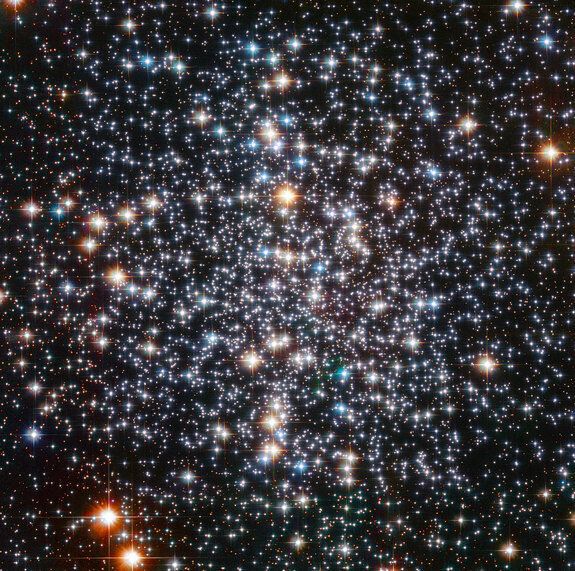
The Hubble Space Telescope is an astronomer's dream telescope. It's been mine since I was a teenager in 1957. In that year I discovered in the local library Arthur C. Clarke's Exploration in Space in which he described a possible future telescope in orbit around Earth, high above the tremors of our planet's atmosphere, where it can peer with unprecedented clarity and precision at remote stars and galaxies.
Little did I know that in 33 years such a telescope would be launched -- or two decades after that I'd be writing a book about it, illustrated by 340 exquisitely detailed pictures of the cosmos that the telescope had captured. Life can offer astonishing surprises.
I have written 15 books on the universe and I've spent a good portion of my life behind a telescope. I'm an astronomy junkie, utterly thrilled by the universe for as long as I've known where to look. I spend every clear night I can watching and photographing the sky. I get as excited now as I did when I was 5 years old and was captivated by the sight of a bright meteor from my backyard.
Hubble has been as big a revolution as was the first telescope built by Galileo in 1610. It has profoundly changed our view of the universe and our place in it.
Now, 22 years into its life, it has outperformed even the most optimistic predictions of its builders. The pictures it has taken -- especially in the last few years -- have outshone everything that came before, cracking open the universe and spilling the answer to humanity's biggest question: How old is the universe?
Each of those 22 years it has been in space, Hubble has orbited at 17,000 miles per hour (28,000 kph), 97 minutes per orbit, 350 miles (560 km) above Earth's surface. It has passed its 100,000th orbit and travelled over 3 billion miles (5 billion km), akin to traveling from Saturn to the Sun and back. It has made more than one million observations, checked out 38,000 celestial objects, and produced more than 700,000 images. Its astronomical data would fill 50 million books. Thousands of astronomers have used the Hubble harvest to probe the universe. They have published more than 8,700 scientific papers. Hubble is the most productive scientific instrument ever built.
So why a new book on the Hubble Space Telescope? And what makes Hubble's Universe: Greatest Discoveries and Latest Images different?
As a full-time astronomy writer and editor, I've been keeping tabs on the Hubble images for its entire voyage. Each is a new thrill to see because, thanks to regular service and upgrade visits by space shuttle crews (ending with the final visit in 2009 just before the shuttles were retired), the telescope is functioning better than ever, and seeing deeper into the universe than ever before.
Because light from remote galaxies takes millions, often billions, of years to reach us, Hubble sees galaxies not as they are, but as they were in the distant past. This time machine effect has allowed astronomers to effectively tunnel almost all the way back to the big bang -- the origin of our universe.
About a decade ago, my publisher approached me about doing a book about the Hubble images, but I knew the best images were yet to come. By 2011, however, the Hubble image harvest had reached critical mass, encompassing every important category of celestial object. It was not only the quality of pictures; it was what they revealed!
Hubble's Universe is my selection of the best, the latest and the most important. A great many of the images have never before published in any book. I liken it to a personal photo album of Hubble's travels, postcards with "guess what I saw!" messages scrawled across the back.
What do the pictures tell us?
Hubble has revealed the universe's age. It has expanded our understanding of star birth, star death and galaxy evolution, and has helped move black holes from theory to fact. It has led to the discovery of dark energy, which mysteriously accelerates the expansion of the universe. It has shown us all stages of galaxy evolution, from birth to toddler to death.
The pervasive question for astronomers and scientists for most of the past century was the age of the universe. As recently as the 1990s, depending on which astronomer you asked, the estimates ranged anywhere from 9 billion years old to 18 billion years old. After five years of work, Hubble gave us the answer: 13.7 billion years, plus or minus less than 100 million. As close as we may ever know for sure. For that alone, the Hubble telescope is regarded as an unqualified success.
Although there will be no further repairs or upgrades to Hubble, it is operating at peak performance and is expected to continue to do so into the next decade. Hubble's next challenge is astronomy's biggest mystery: dark energy. Dark energy is the force that appears to be accelerating the expansion of the universe. We can observe what it does; we just don't know what it is.
Hubble is already well past its predicted 15-year lifespan. It may last twice that span. What a pay-off!
Terence Dickinson is the author of 15 books, several of which are international best-sellers. NightWatch: A Practical Guide to Viewing the Universe is regarded as the essential guidebook for beginning stargazers. His ability to make complicated concepts easily understood to the average reader has won him numerous awards and earned him wide readership. Hubble's Universe: Greatest Discoveries and Latest Images (October 2012, $49.95 hardcover, 300 pages, large format, hundreds of color photographs) is available from booksellers everywhere.